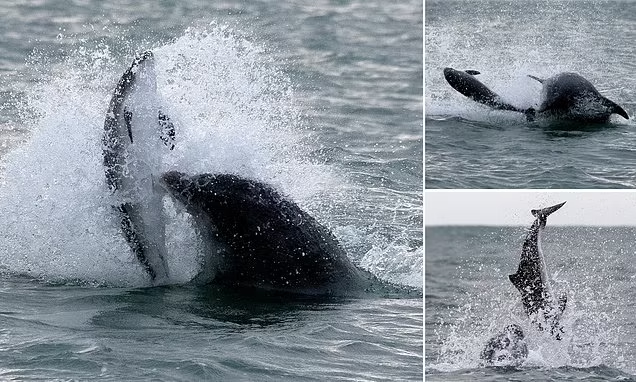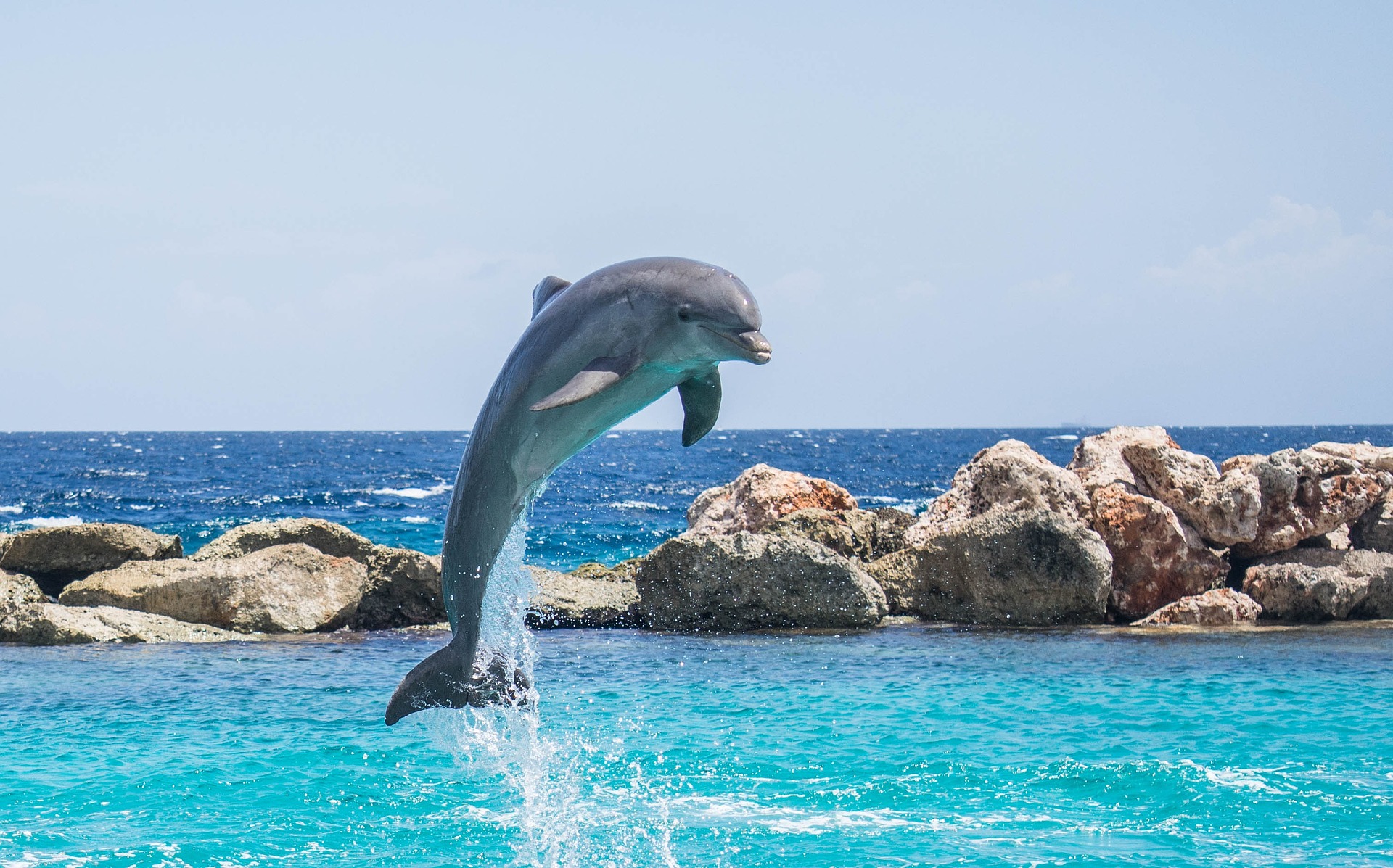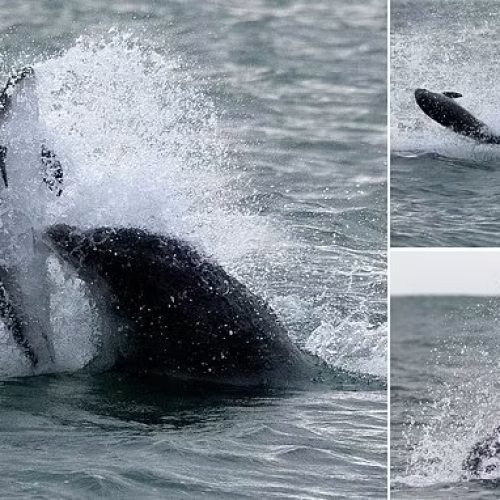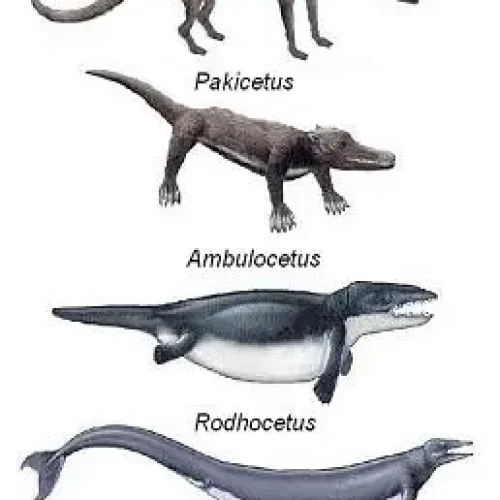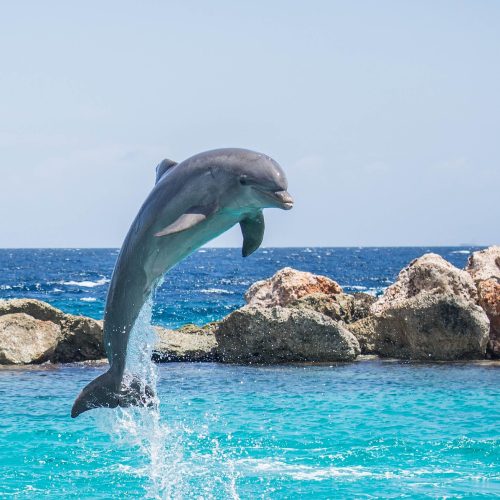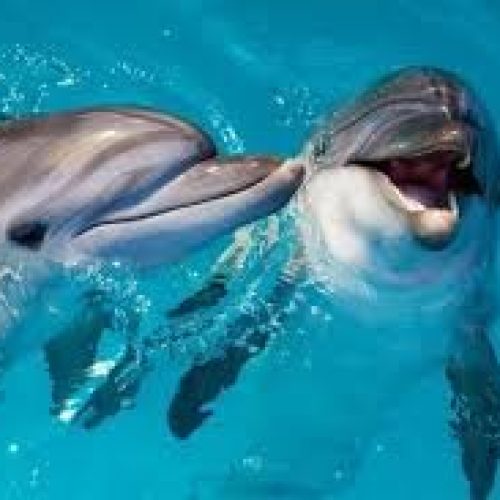Dolphins are renowned for their grace and agility in the water. Yet sometimes these creatures find themselves tragically stranded on our beaches, far from their natural habitat.
This phenomenon raises many questions: what are the environmental factors that cause dolphins to become stranded? Do their health problems play a role in these incidents? And what if their complex social behavior is partly to blame? These are just some of the mysteries we’ll be trying to unravel in our article.
In this article
ENVIRONMENTAL FACTORS INFLUENCING DOLPHIN STRANDINGS
- CHANGES IN WATER TEMPERATURE AND THEIR IMPACT ON DOLPHINS
Dolphins, like all marine mammals, are highly sensitive to fluctuations in water temperature. Rapid changes, such as those caused by climate change or unusual weather patterns, can have a significant impact on their well-being.
According to a study published in the journal “Marine Mammal Science,” a mere 2°C increase in water temperature can lead to a 30% decline in the abundance of certain dolphin species.
This is because warmer waters often contain less dissolved oxygen and can alter the distribution of the dolphins’ prey, forcing them to venture into unfamiliar territories in search of food. In some cases, this can lead to disorientation and eventual stranding.
- UNUSUAL TIDES AND CURRENTS: HOW THEY CAN DISORIENT CETACEANS
Tides and currents play a crucial role in the navigation of dolphins and other cetaceans. These intelligent animals rely on their keen sense of echolocation to navigate the vast expanses of the ocean, using the echoes of their high-frequency clicks to create a mental map of their surroundings.
However, when faced with unusual tidal patterns or strong, unpredictable currents, their navigation systems can be thrown off balance.
In 2019, a pod of over 50 pilot whales stranded themselves on the west coast of Iceland, an event that scientists attributed to the powerful currents and complex underwater topography of the region. Such incidents highlight the vulnerability of these majestic creatures to the forces of nature.
- UNDERWATER NOISE POLLUTION: A STRESS FACTOR FOR DOLPHINS
In recent years, underwater noise pollution has emerged as a significant threat to the well-being of dolphins and other marine life. The oceans are becoming increasingly noisy due to human activities such as shipping, oil and gas exploration, and military sonar operations. This cacophony of sound can interfere with the dolphins’ ability to communicate, navigate, and find food.
Studies have shown that exposure to chronic noise pollution can cause stress, hearing damage, and even behavioral changes in dolphins.
In extreme cases, the stress and disorientation caused by underwater noise can lead to mass strandings, as witnessed in the Bahamas in 2000 when a U.S. Navy sonar exercise resulted in the stranding of 17 cetaceans.
YOU MAY ALSO LIKE – Where are dolphins found around the world? Discover the global map of dolphin populations
HEALTH ISSUES THAT CAN LEAD TO STRANDINGS
- INFECTIOUS AND PARASITIC DISEASES AFFECTING DOLPHINS
Dolphins, like all animals, are susceptible to a variety of infectious and parasitic diseases that can compromise their health and lead to strandings. One of the most well-known examples is the morbillivirus, a highly contagious pathogen that has been responsible for several mass mortality events in dolphin populations worldwide.
In 2013, an outbreak of morbillivirus along the U.S. Atlantic coast resulted in the deaths of over 1,600 bottlenose dolphins. Other diseases that can affect dolphins include brucellosis, toxoplasmosis, and various bacterial infections.
These illnesses can cause a range of symptoms, from skin lesions and respiratory distress to neurological disorders, all of which can contribute to stranding events.
- INJURIES CAUSED BY COLLISIONS WITH BOATS OR ACCIDENTAL CAPTURE IN FISHING NETS
Dolphins are also vulnerable to physical injuries caused by human activities, particularly collisions with boats and accidental capture in fishing gear. As coastal development and marine traffic continue to increase, so does the risk of dolphins being struck by vessels or entangled in nets and other debris.
These injuries can range from minor cuts and bruises to severe trauma, such as broken bones, internal bleeding, and spinal damage. In many cases, injured dolphins may become disoriented, unable to navigate properly, and eventually strand themselves on the shore.
According to a report by the French National Stranding Network, between 2012 and 2016, nearly 10% of the stranded dolphins examined had evidence of collision injuries.
- CONGENITAL ANOMALIES AND MALFORMATIONS IN NEWBORN DOLPHINS
While less common than other causes of strandings, congenital anomalies and malformations can also play a role in these events. Like all mammals, dolphins can be born with various developmental defects that affect their ability to survive in the wild. These can include skeletal deformities, heart defects, and neurological abnormalities.
In some cases, these conditions may not be immediately apparent, but as the calf grows and faces the challenges of life in the ocean, they can become increasingly debilitating. Stranded dolphin calves have been found with a range of congenital issues, from missing fins to malformed jaws, highlighting the importance of genetic health in these populations.
- STRONG FAMILY BONDS AND GROUP COHESION IN DOLPHINS
Dolphins are highly social creatures, living in tight-knit groups called pods. These pods are usually composed of family members, with strong bonds between mothers and calves that can last for years.
In fact, dolphin societies are among the most complex in the animal kingdom, with intricate hierarchies and communication systems.
This strong sense of group cohesion plays a crucial role in dolphin behavior, including their reactions to challenging situations. When a member of the pod is sick, injured, or in distress, the others will often rally around to offer support and protection.
This unwavering loyalty is a testament to the depth of their social connections.
- FOLLOWING SICK OR INJURED GROUP MEMBERS TO THE SHORE
In some cases, the desire to stay close to a struggling pod member can lead dolphins into dangerous situations, such as stranding themselves on the beach.
If a sick or injured dolphin heads towards shallow waters or the shore, the rest of the pod may follow, even at the risk of their own safety.
This behavior is thought to be driven by a combination of factors, including:
– The strong emotional bonds between pod members
– The instinct to protect and care for vulnerable individuals
– The reliance on group decision-making and collective action
While this loyalty is admirable, it can have tragic consequences when it leads to mass strandings.
YOU MAY ALSO LIKE – Can we eat dolphin meat? A controversial and risky consumption.
MASS STRANDINGS: WHEN AN ENTIRE GROUP STRANDS SIMULTANEOUSLY
Mass strandings occur when a large number of dolphins beach themselves at the same time, often resulting in significant mortality rates. These events are particularly heartbreaking, as they showcase the strength of dolphin social bonds in the face of adversity.
Several factors can contribute to mass strandings, including:
– The presence of a sick or injured individual that the pod refuses to leave behind
– Disorientation caused by underwater noise pollution or anomalies in the Earth’s magnetic field
– Panic responses triggered by predator attacks or human activities
In some cases, the initial stranding of one or a few individuals can create a “domino effect,” drawing the attention and concern of other pod members who then become stranded themselves in an attempt to help.
YOU MAY ALSO LIKE – Where are the most dolphins found? Top 10 global spots to observe dolphins in their natural habitat
EFFORTS TO UNDERSTAND AND PREVENT DOLPHIN STRANDINGS
Scientists and conservationists worldwide are working to better understand the causes of dolphin strandings and develop strategies to prevent them. This research involves:
– Investigating environmental factors, such as changes in water temperature, salinity, or prey availability
– Studying the health status of stranded dolphins, looking for signs of disease, parasites, or toxin exposure
– Analyzing the impact of human activities, like shipping, offshore drilling, or military sonar use
Based on these findings, intervention and rescue networks have been established in many regions to quickly respond to stranding events. These teams work to safely return healthy individuals to the water while providing medical care for those in need.
Conservation measures are also being implemented to reduce threats to dolphin populations, such as:
– Creating marine protected areas to safeguard critical habitats
– Regulating human activities that generate underwater noise pollution
– Improving water quality by reducing pollution and runoff from coastal development
HOW THE PUBLIC CAN HELP STRANDED DOLPHINS
If you encounter a stranded dolphin, it is essential to remember that these are wild animals in distress. The best course of action is to:
– Keep a safe distance to avoid causing further stress
– Immediately contact local authorities or stranding response teams
– Provide detailed information about the location, number, and condition of the animals
While it is natural to want to help, attempting to push the dolphins back into the water or otherwise intervening without proper training can be dangerous for both the animals and yourself.
In addition to reporting stranding events, there are everyday actions that everyone can take to contribute to the protection of dolphins and their habitats:
– Reducing plastic waste and properly disposing of fishing gear to prevent entanglement
– Supporting sustainable seafood choices to minimize the impact of fishing on dolphin prey species
– Advocating for policies that prioritize marine conservation and reduce human-induced threats to dolphin populations

